Input devices help users to send information, data, and control signals to a computer. It is the Central Processing Unit (CPU) that receives the input and processes the same in order to produce the output.
Popular input devices are mentioned below:
- Keyboard
- Mouse
- Scanner
- Joystick
- Light pen
- Digitizer
- Microphone
- Magnetic Ink Character Recognition (MICR)
- Optical Character Reader (OCR)
1) Keyboard
It is one of the basic input devices used to enter data into an electronic device like a computer by pressing keys. A keyboard contains different sets of keys for numbers, letters, functions and characters. For wireless communication, keyboards are connected to a computer through a Bluetooth device or a USB.
Types of keyboards: There are numerous types of keyboards depending upon the language and region used. Some of them are discussed below-
- QWERTY Keyboard:
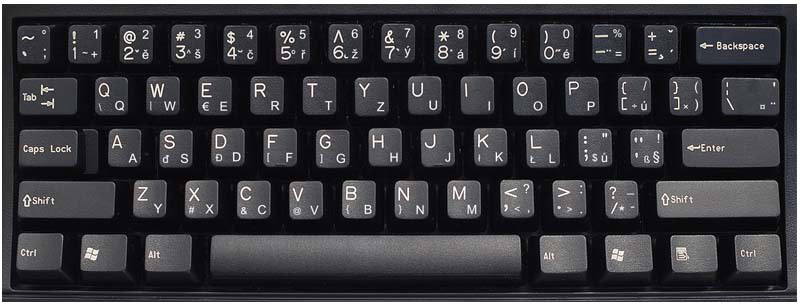
It is the most common keyboard used in the modern times. It is popular even in those countries which do not use Latin alphabets. This keyboard is named after the first six letters present in its top row of alphabetical buttons. Its popularity is such that some people think of it as the only available form of keyboard to use in computers as an input device.
- AZERTY Keyboard:
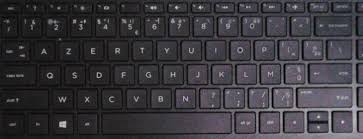
It is the standard French keyboard developed as an alternative to the QWERTY layout, in France. Apart from France, it is majorly used in some other European countries also. Some countries have even developed their own versions of this keyboard.
Just like QWERTY, AZERTY also derives its name from the first six letters present in its top alphabetical row. The W and Q keys in the AZERTY keyboard are interchanged with Z and A keys in the QWERTY keyboard. The M key is placed to the left of the L key in the AZERTY keyboard.
Apart from the placement of letters, QWERTY and AZERTY keyboards also differ in other ways for e.g., the AZERTY keyboard emphasis on accents which is a must for writing European languages like French.
- DVORAK Keyboard:
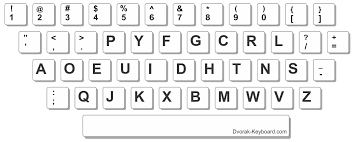
The layout of this keyboard was developed to reduce the finger movement while typing and thereby enhancing the typing speed. To improve typing, the most frequently used letters are placed in the home row.
2) Mouse
To move the pointer or cursor across the screen, a hand-held input device known as ‘Mouse’ is used. It is designed and developed to be used on a flat surface. It has a right and left button accompanied by a scroll wheel in between. In laptop computers, there’s a touchpad that works in the same way as a mouse. The only difference is that instead of moving the mouse you have to move your finger over the touchpad and instead of clicking a button, you have to gently tap on the touchpad to click at your desired place. Integrated features like extra buttons for performing different functions are also present in some mouse devices.
Douglas C. Engelbart invented the mouse in 1963. In early mouse, for movement sensing, a roller ball was integrated underneath. Modern mouse devices work on optical technology under which a visible or invisible light beam controls the cursor movements. Different ports connect a mouse to a computer depending upon the type of mouse and the type of computer.
Most common types of the Mouse:
- Trackball mouse:
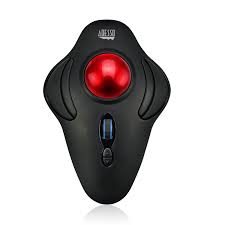
It is a stationery input device that uses a ball mechanism to move the cursor or pointer on the screen. The ball is not fully inserted in the device therefore to move the pointer on screen it can be easily rolled with finger, palm or thumb. For the purpose of detecting the rotation of the ball, the device contains a sensor. The benefit of having this type of mouse is that it remains stationery so you don’t have to move it on the operating surface. Hence, if you are short on desk space, a trackball mouse is the right device to buy for there is no need to move it.
- Mechanical mouse:
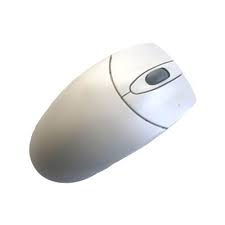
To track its movement, a mechanical mouse contains a system of several rollers and one ball. It is a corded type of mouse that can give you high performance. However, they have a shortcoming that they require regular cleaning because of the dust that enters inside the mechanics.
- Optical mouse:
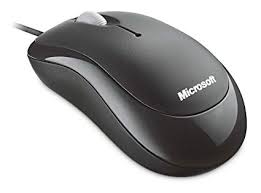
It takes the help of optical electronics for movement tracking. It requires less maintenance than a mechanical mouse and is also more reliable than them. But it is also not short of a weakness- the surface over which it is operated affects its performance. The Optical Recognition system may face problems when operated on a rough surface. On the other hand, light may be wrongly reflected by the glossy surface causing tracking issues. Hence, for best results, non-glassy plain mouse mat should be used.
- Cordless and wireless mouse:
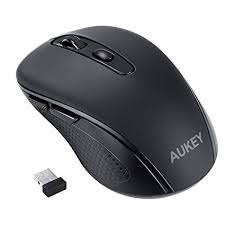
It is void of cable and for controlling the cursor’s movement it uses wireless technology such as radio (WiFi or Bluetooth) or IrDA (infrared). Generally, it is bought and used to enhance the experience of working with a mouse. Batteries are required by it for power supply.
3) Scanner
Pages of text and pictures are used by it as input. It helps to scan a document or picture. The document or pictures so scanned are converted by it into a digital format and then they are exhibited on the screen as output. To convert images into digital ones, it uses optical character recognition techniques.
Common types of scanners:
- Flatbed scanner:
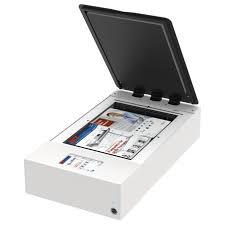
It contains a glass pane and a moving optical CIS or CCD array. First, the pane is illuminated by the light and then the image is put up on the glass pane. The light scans the document by moving across the glass pane and through this process it produces the digital version of the image. For scanning transparent slides, you will need a transparency adapter.
- Handheld scanner:
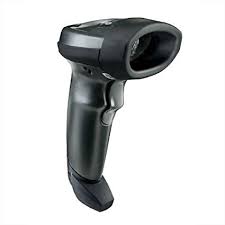
It is a small sized manual scanning device. The device is to be held by hand and rolled over a flat image that is to be scanned. The demerit of using this device is that it requires the hand to be calm and steady for best results, otherwise the image might get distorted. Amongst the most common handheld scanners in use is the barcode scanner which can be seen regularly in shopping stores.
- Sheetfed scanner:
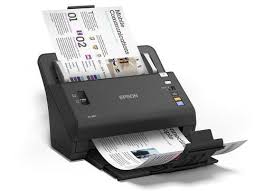
There is a slot present in the scanner, where the document to be scanned is inserted. Sheetfed scanner’s main components include the scanning module, calibration sheet and the sheet-feeder. In this scanner, instead of light, the document moves through the scanner. It is desirable for scanning single page documents rather than thick objects like magazines, books, etc.
- Drum Scanner:
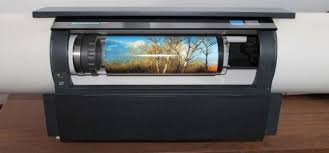
It contains a photomultiplier tube (PMT) for scanning images. Unlike a flatbed scanner, it does not contain a charge-coupled device. The PMT is extremely sensitive to light. The glass tube is used as a platform for the image to be placed upon, then the light moves throughout the image producing a reflection of the image. That image is captured and then processed by the PMT. Since these scanners have a high resolution, they are suitable for detailed scans.
- Photo scanner:
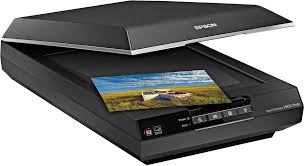
It has good colour depth and high resolution both of which are must for scanning photographs and producing good quality results. In-built software is present in some of the photo scanners for restoring and cleaning old photographs.
4) Joystick
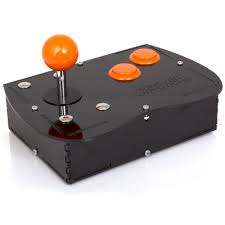
Like a mouse, a joystick is also a pointing input device. It has a spherical base and is made up of sticks. A socket is used to fit the base in it hence allowing the stick to move freely. The pointer or cursor on the screen is controlled by the movement of the stick.
C.B. Mirick invented the first joystick at the U.S. Naval Research Laboratory. There can be different types of joysticks such as finger-operated joysticks, displacement joysticks, isometric joystick, hand operated joystick, etc. In case of a Joystick, the cursor continuously moves in the direction of the joystick unless it is upright, whereas, in case of a mouse, the movement of cursor happens only when the movement of mouse happens.
5) Light Pen
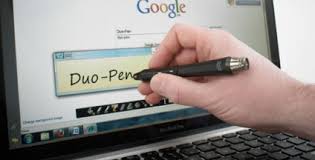
It is an input device having an identical look to a pen. There’s a light sensitive detector present on the tip of the light pen that allows the user to select or point to objects on the display screen. The object location is detected by the light sensitive tip of the light pen which then sends corresponding signals to the CPU. It allows you to draw on the screen, if required. Around 1955, the first light pen was invented at the Massachusetts Institute of Technology as a part of the Whirlwind project. It is no longer in use since it isn’t compatible with LCD screens.
6) Digitizer
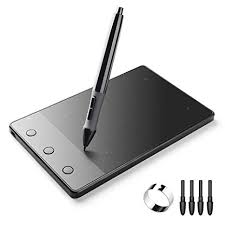
It usually comes with a stylus and has a flat surface. Just like we draw on paper with a pencil, the digitizer allows the user to draw graphics and images using the stylus. The graphics or images so drawn appear on the display screen or the computer monitor. The software converts the handwritten text to typewritten words and also the touch inputs into lines.
It is a useful device to capture handwritten signatures and images or data from taped papers. Moreover, it can also receive information in the form of drawings and send the output to a Computer Aided Design (CAD) application and software like AutoCAD. Therefore, it can be concluded that Digitizer helps you convert hand-drawn images into formats that are suitable for processing.
7) Microphone

This input device is used to input sound. The sound vibrations are received and converted by it into audio signals or it sends them to a recording stadium. The audio signals, after being converted into digital data, are stored in a computer. Telecommunication with others is also possible through a Microphone. It is also used to add sound to video conferencing and presentations. Microphones capture sound waves in different ways, on this basis they are divided into different types. Three of the most common types of Microphones are discussed below:
- Dynamic:
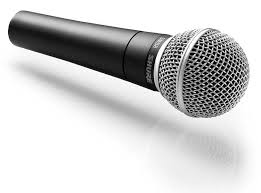
It has a simple design and is the most commonly used microphone. It contains a magnet whose front is wrapped by a thin sheet and a metal coil. The sheet first transfers the vibrations from sound waves to the coil and then from the coil to the electric wires from where the sound is transmitted like an electric signal.
- Condenser:
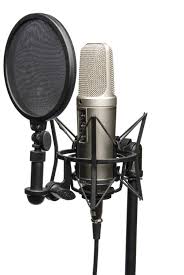
It is mainly designed for the purpose of audio recording and has a very flat and sensitive frequency response. It contains a front plate and a back plate. The front plate is known as diaphragm and the back plate is parallel to the front plate. The sound vibrates the diaphragm on hitting it and alters the distance prevailing between the two plates. The changes in distance get transmitted through electric signals.
- Ribbon:
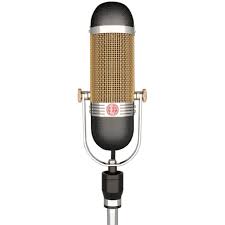
It is popular for the reliability it provides. It possesses a thin ribbon made of duraluminum, nanofilm, or aluminum suspended in a magnetic field. After vibrations are caused in the ribbon by the sound waves, the ribbon goes on to generate a voltage that is proportional to the velocity of the vibration. The transmission of voltage takes place as an electric signal. Modern ribbon microphones produce strong signals because they are laced with advanced magnets unlike the early ribbon microphones that used a transformer to increase the output voltage.
8) Magnetic Ink Character Recognition (MICR)
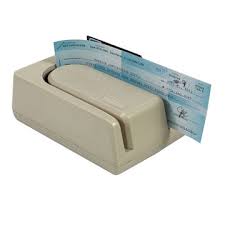
It is an input device that is designed to read the printed text with magnetic ink. It is a character recognition technology that uses special magnetized ink which is sensitive towards magnetic fields. Banks use it to process the cheques and some other organisations also use it where security is a major issue. It has the capacity of processing 300 cheques in one minute that too with 100
The details are read by the device and sent to a computer for processing. Before the magnetic information is translated into characters, the document printed in magnetic ink must pass through a machine that magnetises the ink.
9) Optical Characters Reader (OCR)
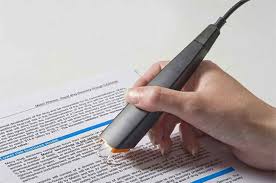
It is designed in a way that it could convert the scanned images of typed, printed, or handwritten text into digital text. It is widely used in libraries and offices for converting physical documents and books into electronic files.
It uses a scanner to process and copy the physical form of a document. After it copies the documents, they are converted by the OCR software into a two colour (black and white) version called bitmap. In the next step, it is analyzed for dark and light areas, where the light area is selected as background and the dark areas are identified as characters. This input device is widely used to convert the hard copies of historic and legal documents into PDFs. If required, the documents converted can be edited in the same manner as the MS word documents are edited.